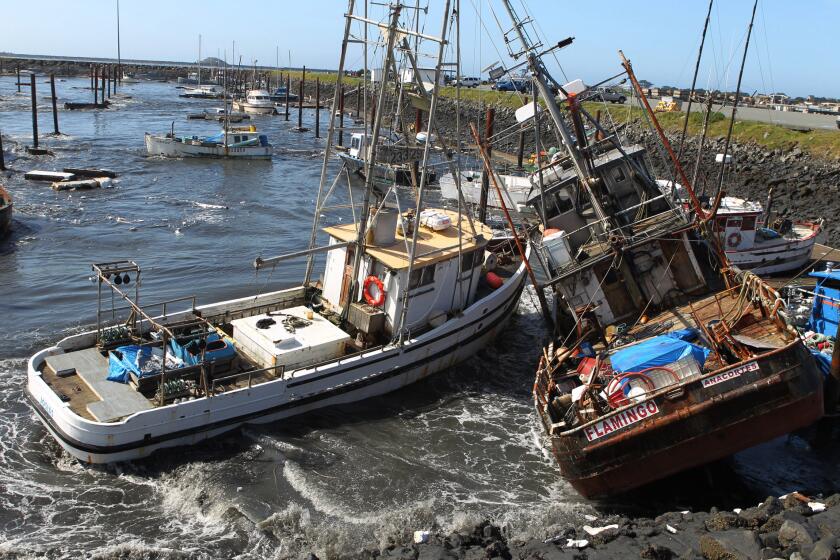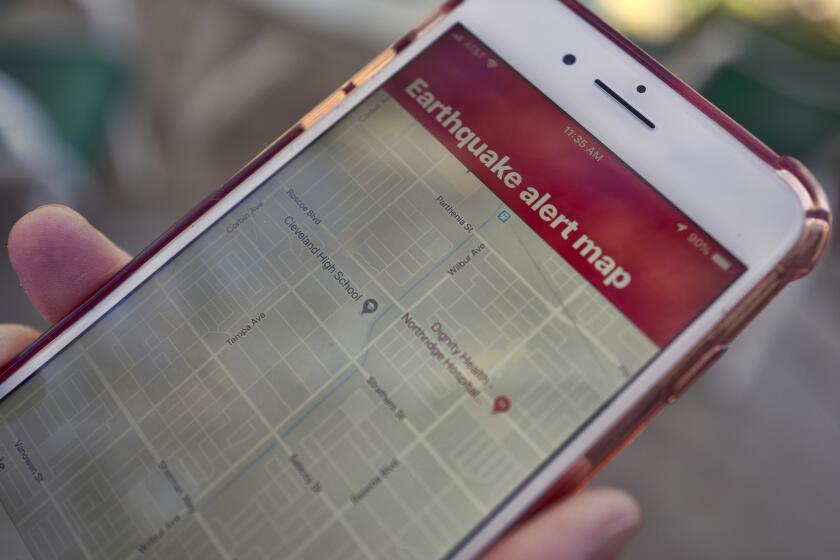A Shaky Record on Victims’ Aid
- Share via
A series of strong aftershocks from the 1994 Northridge earthquake occurred the weekend of April 25, some 39 months after the most devastating disaster ever to hit Los Angeles. Perhaps the most startling aftershock was yet to come. In a news conference April 28 at the unrepaired, quake-damaged home of Barbara Shugar in Woodland Hills, state Insurance Commissioner Chuck Quackenbush announced plans to help consumers recover money owed by insurance companies for latent (hidden) earthquake damage. Quackenbush pledged his department’s support to frustrated property owners still seeking to recover “righteous” (his word) insurance benefits for quake damages.
The long-overdue announcement came as unexpected relief for quake victims struggling with the wrongful denial of their claims because of misapplication by their carriers of the one-year statute-of-limitation policy provision. Yet the reluctant, mostly symbolic, support seems to have more to do with Quackenbush’s upcoming reelection campaign than with his concern for the well-being of millions who have suffered through disaster losses in California.
Quackenbush, not known to be “consumer friendly,” has not heretofore used his authority for the benefit of the insured. To the contrary, he has impaired enforcement of Proposition 103 through sycophantic compromise, needless delay and irresponsible consumer division staff reductions. He has eviscerated essential insurance policy provisions of the Unfair Claims Practices Act that benefit consumers. He has gutted earthquake coverage through establishment of the California Earthquake Authority, transferring earthquake risk from insurers to the insured and providing drastically limited coverage at greatly increased premiums. Today, the consumer has far less in insurance protection and more in insurance costs than when Quackenbush took office.
Quackenbush’s denouncement of the flagrant pattern of “improper denial” of insurance claims, a clear example of bad-faith conduct, appears to be more to forestall mounting criticism than to aid quake victims. The commissioner knew more than a year ago, through research by his department’s legal compliance staff, that carriers were wrongfully denying earthquake claims. The delay in his response caused thousands of homeowners to abandon the pursuit of legitimate quake claims and consequently to lose far more than the $3 million in claims he asserts his department has expedited.
Via the one-year statute of limitations, the California insurance code restricts an insured’s ability to bring legal action against his insurance company to 365 days after the “inception of the loss.” The statute is “tolled,” or stopped, once a claim is opened (or reopened, if additional damage or relevant new information is found). The one-year deadline counts off the remaining days again when the carrier closes or denies the claim, or refuses to reopen it. This is significant because if an insured loses his ability to sue his carrier--his only weapon against any “bad faith” loss adjustment practices--the carrier will not pay the claim.
The California Supreme Court, in a 1990 decision, Prudential-LMI vs. Superior Court of San Diego, corrected this obvious inequity by modifying the code, incorporating a “delayed discovery” rule that under certain circumstances extends the deadline. According to the court, the inception of loss begins the day a reasonable person discovers the damage and not necessarily the day the loss event occurred. Under Prudential-LMI, reasonable discovery at any time, even today, could force an insurance company to open or reopen a claim for damage caused by the Northridge earthquake.
(A major obstacle for the insured, however, is that once the carrier improperly denies the claim, the insured must petition the court, thus incurring onerous legal expenses merely to force the claim to be opened under the Prudential-LMI delayed discovery rule.)
If Quackenbush is sincere in his pledge to aid the remaining thousands of quake victims, at the very least he must use his authority to rectify inequities of the post-quake insurance settlement process, in the following ways:
* Inform all insured earthquake victims of their rights under their policies, particularly those who may have been improperly denied coverage under the one-year statute, using public announcements in the media.
* Enforce all insurance codes relevant to the claims adjustment process and impose sanctions and fines for improper and illegal claims adjustment conduct.
* Require clear, consistent and unequivocal application of the Unfair Claims Practices Act.
* Declare a moratorium and then establish appropriate standards for the use of the appraisal provision in earthquake claims.
* Issue a ruling requiring replacement of quake-damaged foundations and slabs to a pre-loss condition, prohibiting the use of epoxy to “glue” concrete.
* Require inspections and abatement of asbestos and lead contamination in quake-damaged buildings.
* Require payment by carriers of the insured’s own selected construction professionals (contractors, civil, structural or soils engineers, etc.).
“Earthquake damage is difficult to find,” Quackenbush said in Woodland Hills. So is the real consumer-oriented insurance commissioner.
More to Read
Sign up for Essential California
The most important California stories and recommendations in your inbox every morning.
You may occasionally receive promotional content from the Los Angeles Times.










